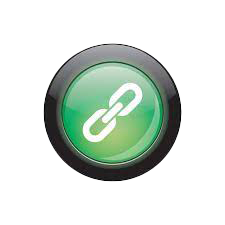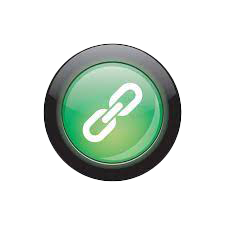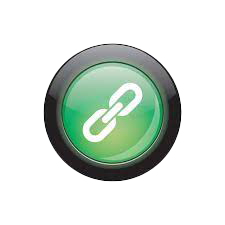Ultraviolet photography is a photographic process of recording images by using radiation from the ultraviolet (UV) spectrum only. Images taken with ultraviolet radiation are of course used for scientific, medical or artistic purposes. Images can reveal deterioration of art works or structures not apparent under light. Diagnostic medical images may be used to detect certain skin disorders or as evidence of injury. Some animals, particularly insects, use ultraviolet wavelengths for vision; ultraviolet photography can help investigate the markings of plants that attract insects, while invisible to the unaided human eye. Ultraviolet photography of archaeological sites may reveal artifacts or traffic patterns not otherwise visible. Ultraviolet photography was used in forensics and as evidence in court at least as early as 1934. Photographs made with ultraviolet radiation can reveal bruises or scars not visible on the surface of the skin, in some cases long after visible healing has completed. These can serve as evidence of assault. Ultraviolet imaging can be also used to detect alteration of documents.
But my interest is in the artistic use of UV. UV produces very bright skies (and water surfaces), dark ground vegetation, dark foliage on trees, very hazy scenery at distance, and so on. Humans, in particular of the male kind, appear dark-skinned/swarthy. This can be changed if a bit of infrared light is allowed to get through. If you want to give your photos a boost unlike any other, ultraviolet photography may be the way to go! You may have heard the term ‘ultraviolet’ used in relation to the sun (as that accounts for tans and sunburns), as well as at a nightclub where UV waves cause certain colors to glow. But in photography, UV refers to using light beyond our own visual spectrum to capture unique artistic images.
It should be understood that UV Photography is NOT easy as it has many obstacles. We should first explore two types of light UV Reflective and UV Fluorescence. In terms of QED reflection is caused by absorption and re-emission of incident photons, which follow Fermat's principle and hence obey Snell's law. On the other hand, fluorescence is the absorption and re-emission of photons in an isotropic manner.
UV Reflectance
UV Reflectance is one that isn’t used as a term very often, even though this tends to be the most popular method of UV photography. Like the name implies, UV reflectance is using a light source that contains UV light (such as the sun or a full-spectrum light source) and collecting only the ultraviolet light that hits the camera sensor. Basically, the reflected light is what you’re photographing.
UV Fluorescence
If you’re into unique experiences, you have seen UV fluorescence happen in real time, such as going to a black light party (a party in the dark with only UV light).
Here I want to focus upon UV Reflective light.
The first obstacle is the ligh itselft. I have used UV lamps, but sunlight is the most available free UV radiation source for use in reflected UV photography, but the quality and quantity of the radiation depends on atmospheric conditions. A bright and dry day is much richer in UV radiation and is preferable to a cloudy or rainy day so you need to live in a warm sunny country to take effective UV images. Given the issues with lighting aUltraviolet light, or light from 200nm – 400nm in wavelength, is notoriously difficult to image with normal camera equipment even on a very sunny day.
But it is not just the lighting that causes issues with UV photography. A normal digital camera will record images in the visible light spectrum, or 400nm – 700nm in wavelength. To unlock sensitivity to those shorter wavelengths, a camera has to be physically modified to allow passage of light below 400nm.
Even with a modified camera most lenses restrict the passage of UV. Also the filter thickness makes a difference so I use a minimum of 2mm. Coated filters are thus not as effective a quality filters. I use a full spectrum modified Canon R and filter stacks to achieve required light frequencies as my Sony did not like to focus well in UV.
The main filter I use is the QB39 UV Bandpass Pass Filter. UV Bandpass Filters feature center wavelengths across the ultraviolet (UV) spectrum that align with wavelengths commonly used as analytical spectral lines, including 193nm, 214nm, and 248nm. These filters feature a UV bandpass coating on the first surface, along with a protective overcoat that resists moderate abrasion. The simple construction of these filters provides greater environmental stability compared to traditional coated UV filters. UV Bandpass Filters are designed for high transmission in the UV, and with deep blocking for wavelengths from X-ray to the far infrared (FIR) that are outside of their narrow bandwidths. Typical applications for these bandwidths include Raman spectroscopy as well as chemical spectral analysis.
But one also needs to filter out visible and infrared light or else any UV light coming through the lens will be drowned out by the much more plentiful Visible and IR light, and the ultraviolet signal we are looking for will be lost. This is where this UV Bandpass filter comes in. A proper UV pass filter allows ultraviolet light to pass through to the sensor while blocking all visible and infrared light that may contaminate an otherwise purely UV image.
Then we have issues with lenses. The trouble is, UV light is so easily blocked by most camera lenses as the optics allow small visible or IR light leaks which will overpower the UV light and create a mostly Visible or IR image instead. Whilst most types of glass used in lenses will allow longwave UV to pass, they absorb all the other UV wavelengths, usually from about 350 nm and below. This is why it’s important to make sure that you are using a lens with high UV transmission, as most lenses block too much UV and end up allowing IR and Visible light to trickle in and take over the exposure.
Sometimes we want some IR light but not enough to overpower the UV light. The filters can be used individually so the QB39 can be used on its own to give almost perfect normal colour reproduction when used on a full spectrum camera with a Custom White Balance. Unlike most UV/IR Cut Filters, the QB39 is an absorption type filter, rather than an interference type , the QB39 will work effectively with any focal length lens and give an even colour even at the corners.
So I usually add a ZWB2 in the filter stack. The ZWB2 filter also can used used on it's own, it will pass mainly IR above about 800nm, but also some Blue, Violet and UV, this yields an interesting image straight from the camera with light grey foliage and deep blue/violet skies, which look very frosty.
It is all a matter of balance and experimentation!!
In conclusion, if you have the time and money to spend- UV photography is an absolutely marvelous niche to get into. With the idea that photography is intended to show the audience a new way of looking at things, you can take that concept and enhance it tremendously with UV photography showing what lies in the invisible colour spectrum.





